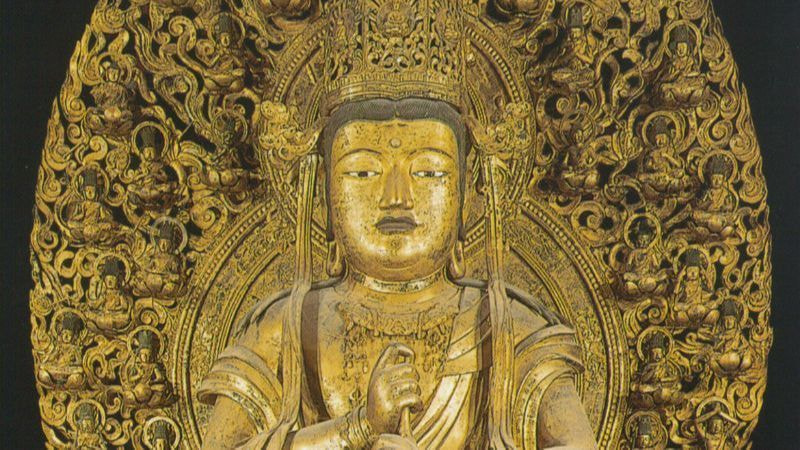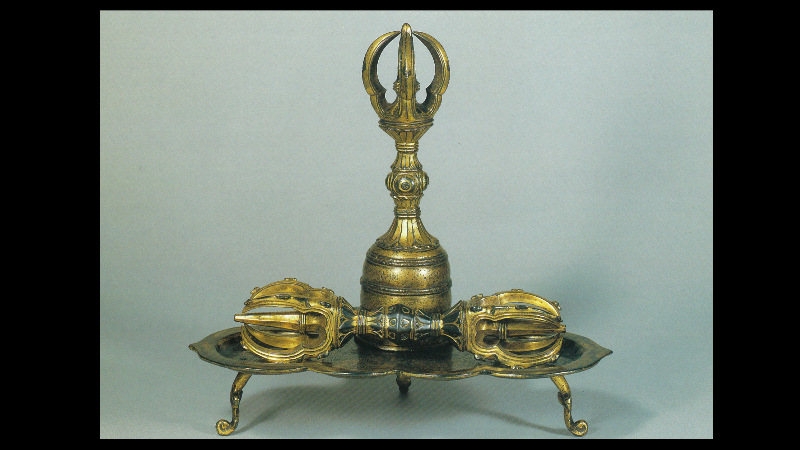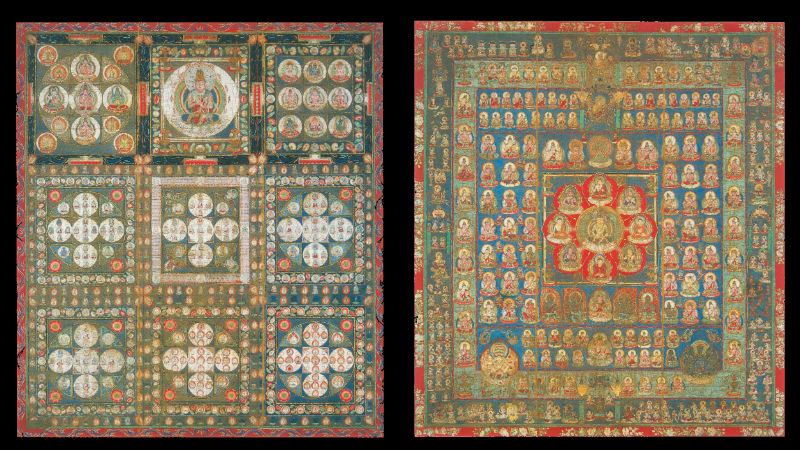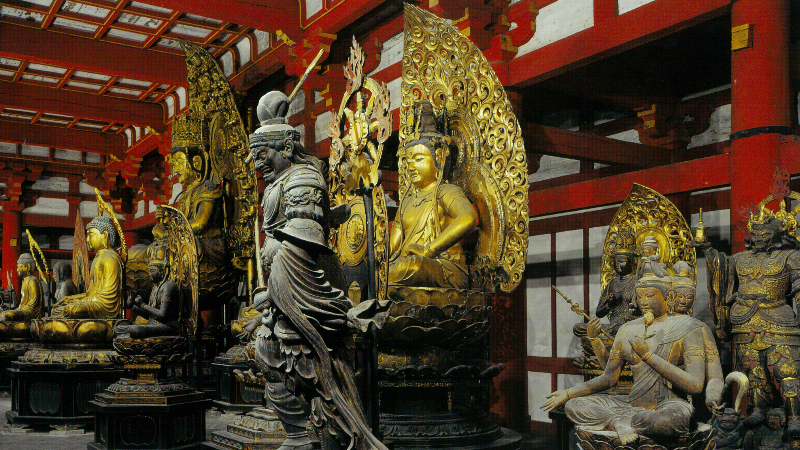Teachings of Shingon Buddhism


Words of Buddha; Words of Truth
“Shingon,” or “Mantra” in ancient India, means the Words of Buddha, or the Words of Truth.
The fundamental sutras of Shingon Buddhism are “Dainichi-Kyo” (Mahavairocana Sutra) and “Kongocho-kyo” (Vajrasekhara Sutra), and its principal image is Dainichi Nyorai (Mahavairocana). Dainichi Nyorai is the manifestation of the whole universe, which consists of six elements: earth, water, fire, wind, void, and consciousness. Dainichi Nyorai transforms into different images of Buddha and saves us. The wish of each Buddhist image is indicated by the objects held in the hands or symbolic signs made with the fingers, and their wishes are also delivered to us via shingon, bijakshara (a monosyllable representing an image of Buddha), and sutras. Dainichi Nyorai is the basis of different images of Buddha, and the manifestation of the entire universe. Yet, Dainichi Nyorai is also represented by the bijakshara character “阿” (pronounced “a”). “阿” is the first of the twelve vowels of bijakshara Sanskrit characters, and accordingly is interpreted as the beginning or the essence of things. This idea corresponds to a concept presented by Dainichi Nyorai, “Neither arising nor ceasing.” We all arise from “阿” and return to “阿.”
The “Dainichi-Kyo” sutra preaches the following three doctrines for attaining Buddhahood upon death. First, we must be aware of Bodhicitta within the self, which is the desire to attain enlightenment and save others. Second, we must have great compassion, the mercy of Dainichi Nyorai, with which we sympathize with others. Third, we must learn to attain the ultimate in saving others via mercy. Likewise, the “Kongocho-kyo” sutra preaches five phases of meditation practices through which we learn to attain Buddha equivalence. The goals of each practice phase are as follow. Attain awareness of one’s Bodhicitta; train oneself and nurture the Bodhicitta; consolidate the Bodhicitta; embody one’s Buddha-nature to become a Bodhisattva; attain eternal enlightenment.
“Salvation of All Sentient Beings”
“Attainment of Buddhahood during Life”
“Pure Land of Secret Solemnity”
Kobo-Daishi, the founder of Shingon Buddhism, proclaimed three slogans:
“Salvation of All Sentient Beings,” “Attainment of Buddhahood during Life,” and “Pure Land of Secret Solemnity.”
The first slogan is, “Salvation of All Sentient Beings.” For this slogan, Kobo-Daishi performed an incantation and prayer for the spiritual protection of the state; established Shugei Shuchiin, a school for common people; and reconstructed the Mannoike Reservoir, the largest irrigation reservoir in Japan. In addition, he preached the “Commandments for Ten Good Deeds.” These proscribe killing, theft, adultery, falsehood, embellished language, vilification, double-dealing, greed, wrath, and evil thought. He also preached the “Ten Buddhist Practices for Attaining Enlightenment.” Known as paramita, these include practices for perfection of six virtues: charity, morality, endurance, diligence, meditation and wisdom. The paramita of wisdom is segmented into four practices for perfecting skillful means to attain wisdom, aspiration to deepen wisdom, spiritual power to do good and judge truth or falsity, and knowledge to exercise wisdom. In addition, he preached the importance of four obligations: to one’s parents, to one’s sovereign, to all living beings, and to the Three Jewels (Buddha, the teachings of Buddha, and the community of monks and nuns).
The second slogan, “Attainment of Buddhahood during Life,” is achieved by pursuing the above-mentioned practices. At the same time, we must be aware of “Three Mysteries”: our body (good behavior), our mouth (good diction), and our mind (thoughtfulness). Through these actions, we can attain Buddhahood not posthumously but rather with the body we inherited from our parents.
The third slogan, “Pure Land of Secret Solemnity,” was the ultimate goal set by Kobo-Daishi. With this slogan, he endeavored to make this world the Pure Land, the land in which Buddha is believed to live. The teachings of Shingon Buddhism advise us to become aware of Bodhicitta within the self, to train ourselves and nurture the Bodhicitta, and to live for the good of others and save the world. Through these actions, we can attain Buddhahood during life, according to which this world will become the Pure Land filled with the spirit of love.
The evangelistic motto of Shingon Buddhism, “Buddha is Alive in Our Hearts,” conveys these teachings and practices in a way that is easy for us to apprehend.




